The student’s guide to information disorders
What does “fake news” actually mean? Not much. Here’s how one journalism student tried to recognize the elements of information disorder in her own life.
The term “fake news” is unavoidable. It pops up on TV screens and social media. It’s flung around everywhere, from the campaign trail to the dinner table. Interning for the News Co/Lab means I learn more about fake news every day. One of the biggest lessons I’ve learned is that “fake news” is a vague term that doesn’t fully encompass today’s wide range of information issues.
That lesson comes from one of the world’s leading misinformation experts, Claire Wardle. She’s the co-founder of First Draft, a nonprofit organization that supports professionals who want to fight for truth in the digital age. Wardle’s work breaks down the broad term of fake news into three distinct categories, which she coined “information disorder”:
- Misinformation: False information someone shares without knowing it’s untrue
- Disinformation: False information that’s shared with the intention to harm
- Malinformation: True information that’s used to harm others
The three types of information disorder can then take seven different forms, Wardle says. Even though I’m a journalism student, I hadn’t learned any of this before. It made me wonder: How many other students are in my shoes? Wardle explains the different types of misinformation over on First Draft News, but I wanted to see how they appear in the real world. I found this helpful article that demonstrated the seven types of mis- and disinformation in the context of the German election; then I went on the hunt for extra examples.
I hope these can help contextualize Wardle’s seven types — and help other students recognize information disorder in their own lives. They’re ordered on a continuum from misinformation to malinformation.
1. Satire or parody: False content meant to be funny that can fool people who don’t recognize the humor
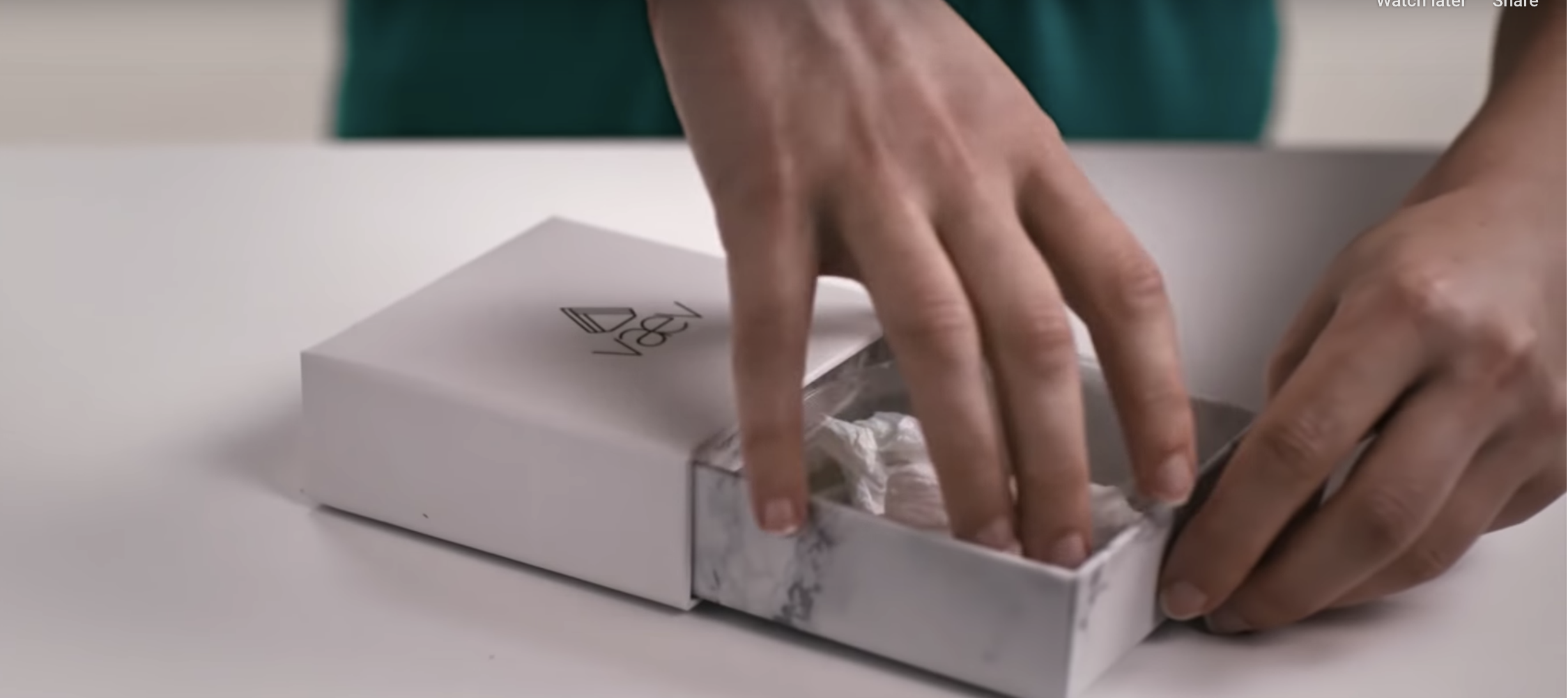 Satire and parody are meant to be so outrageous people laugh at the content because of its unbelievability. But sometimes humorous content meant to poke fun can instead be taken at face value. Comedian Mekki Leeper saw how certain brands sold items that seemed outrageous. He wanted to show how gullible consumers can be when it comes to alternative health products like Goop — which sells psychic vampire repellent — or raw water seller Live Water. His solution? Create a ridiculous fake company that sells $80 used tissues to fight infection. He called it Vaev — the Danish word for “tissue” — and sent packages to various news outlets. According to Poynter, Time, the New York Post, Fox News and the Guardian all reported on the bogus company as though it was real, failing to recognize it was simply satire.
Satire and parody are meant to be so outrageous people laugh at the content because of its unbelievability. But sometimes humorous content meant to poke fun can instead be taken at face value. Comedian Mekki Leeper saw how certain brands sold items that seemed outrageous. He wanted to show how gullible consumers can be when it comes to alternative health products like Goop — which sells psychic vampire repellent — or raw water seller Live Water. His solution? Create a ridiculous fake company that sells $80 used tissues to fight infection. He called it Vaev — the Danish word for “tissue” — and sent packages to various news outlets. According to Poynter, Time, the New York Post, Fox News and the Guardian all reported on the bogus company as though it was real, failing to recognize it was simply satire.
2. Misleading content: A misleading use of information that tries to frame an issue or individual
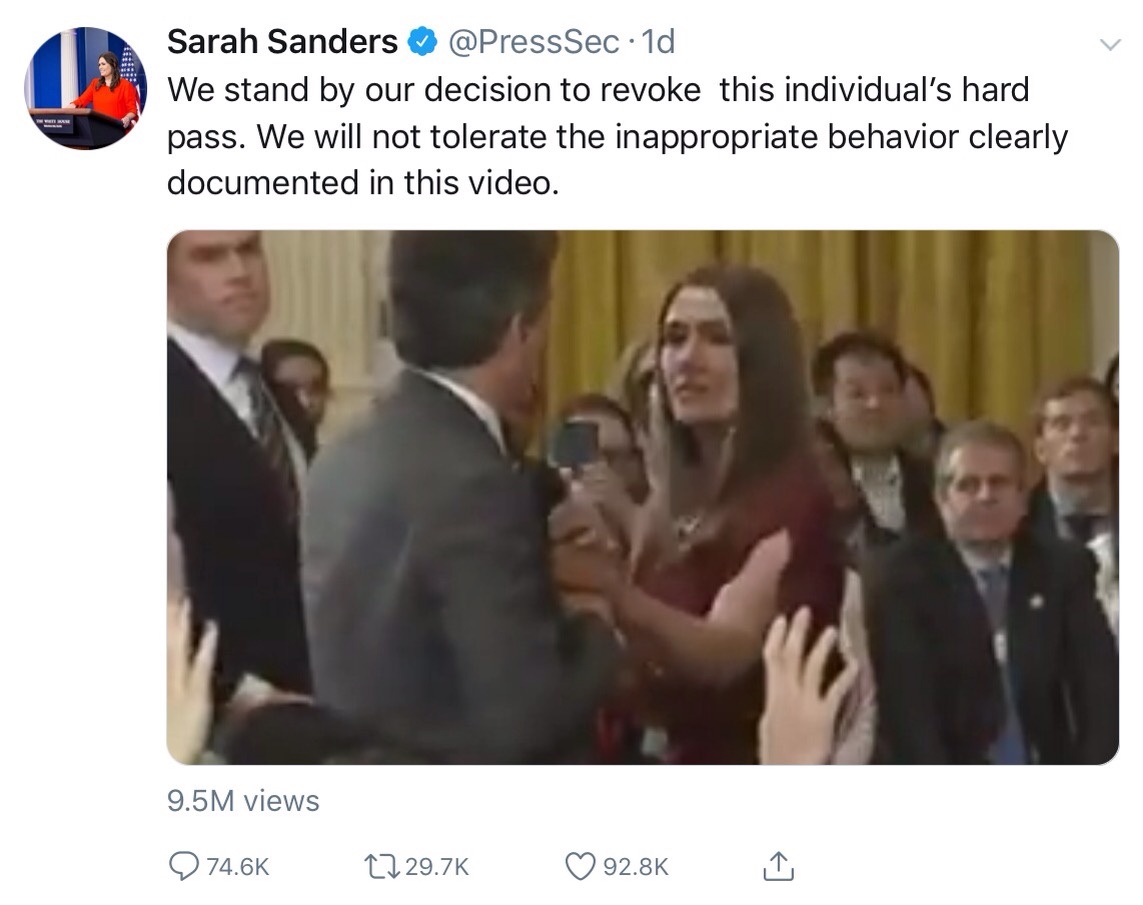 This type of misinformation misleads its readers by misusing information to frame topics or people in calculated ways. Cropping photos, choosing quotes or statistics to further an agenda or manipulating videos to alter context are all examples of misleading content. Former Press Secretary Sarah Huckabee Sanders tweeted a video of Jim Acosta and a young female intern, saying, “We will not tolerate the inappropriate behavior clearly documented in this video.” She included video footage that many people called out as doctored. The Washington Post displayed her video side-by-side with original CSPAN footage, showing how the slowed-down video mislead people into thinking Acosta touched the intern for longer than he did. Images can also be edited to deceive people. Here are five strategies to tell if an image is fake.
This type of misinformation misleads its readers by misusing information to frame topics or people in calculated ways. Cropping photos, choosing quotes or statistics to further an agenda or manipulating videos to alter context are all examples of misleading content. Former Press Secretary Sarah Huckabee Sanders tweeted a video of Jim Acosta and a young female intern, saying, “We will not tolerate the inappropriate behavior clearly documented in this video.” She included video footage that many people called out as doctored. The Washington Post displayed her video side-by-side with original CSPAN footage, showing how the slowed-down video mislead people into thinking Acosta touched the intern for longer than he did. Images can also be edited to deceive people. Here are five strategies to tell if an image is fake.
3. Imposter content: False content that impersonates a credible source
A famous fake news website from 2016 was Abcnews.com.co. Notice that it has a different URL from the actual ABC News website. Some sites try to trick readers by masquerading as credible sources. This site had a similar logo to ABC News and aimed to trick readers by looking like a credible source. Spot imposter content by running a separate Google search of the news outlet’s name. If this comes up with a new site with a different URL, seeing double can be a sign of trouble. It’s important for readers to constantly check their sources to make sure they’re not getting tricked by a copycat site such as this one.
4. Fabricated content: False content designed to trick people and cause harm
Fake content that’s spun out of thin air can be portrayed in a way that seems believable — if a person doesn’t check the source. This professional-looking website is not NBC, but rather is a fake site designed to look the real thing. A good way to stay up-to-date on false news websites is to check out the Junk News Archive by Snopes.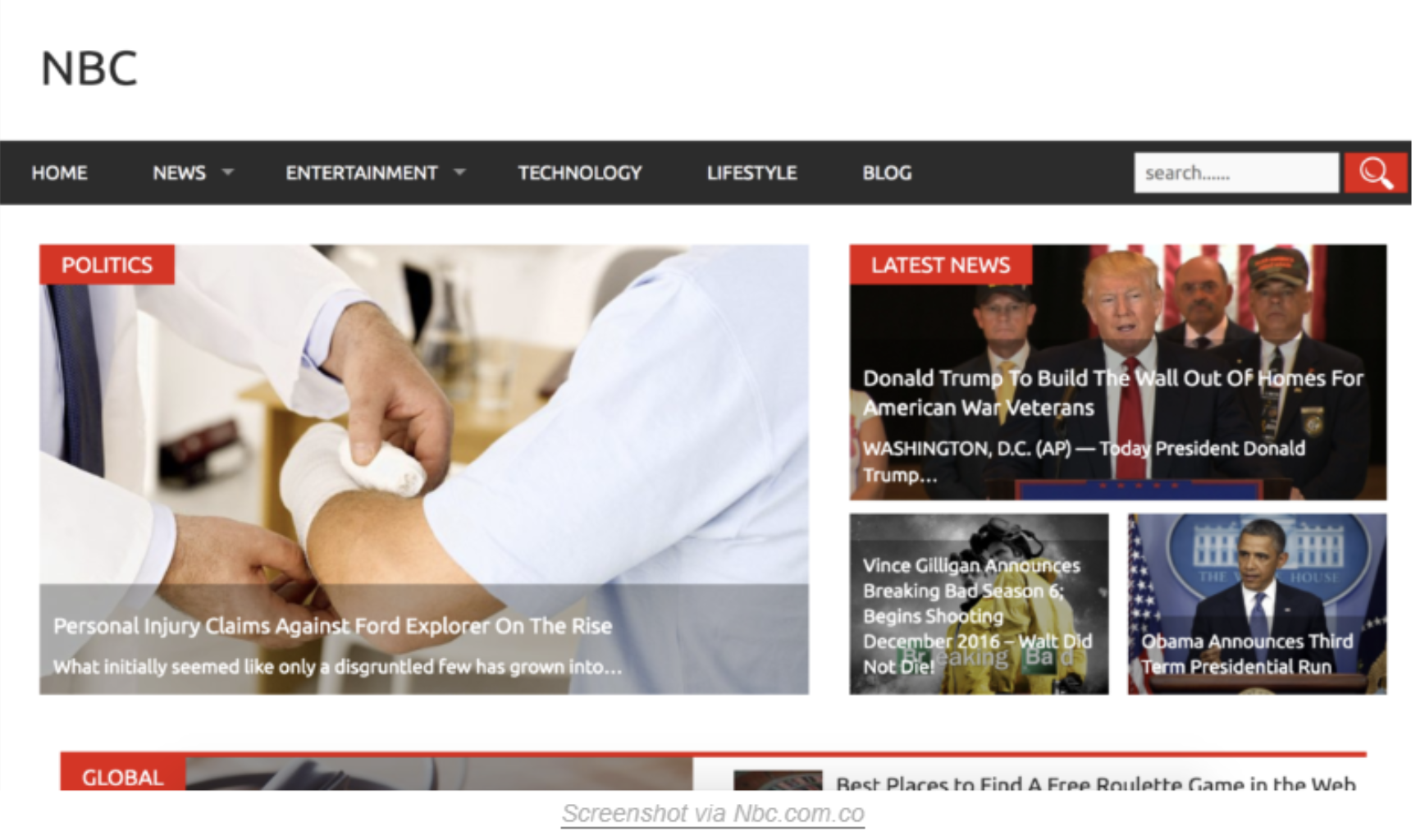 Check out the fake news headlines in this screenshot. Despite the headline, Obama never announced a third-term presidential run. Fabricated content can be sussed out by a fact-checking search in another tab to see if any reputable outlets are telling the same story.
Check out the fake news headlines in this screenshot. Despite the headline, Obama never announced a third-term presidential run. Fabricated content can be sussed out by a fact-checking search in another tab to see if any reputable outlets are telling the same story.
5. False connection: Headlines, visuals and captions that don’t support the content
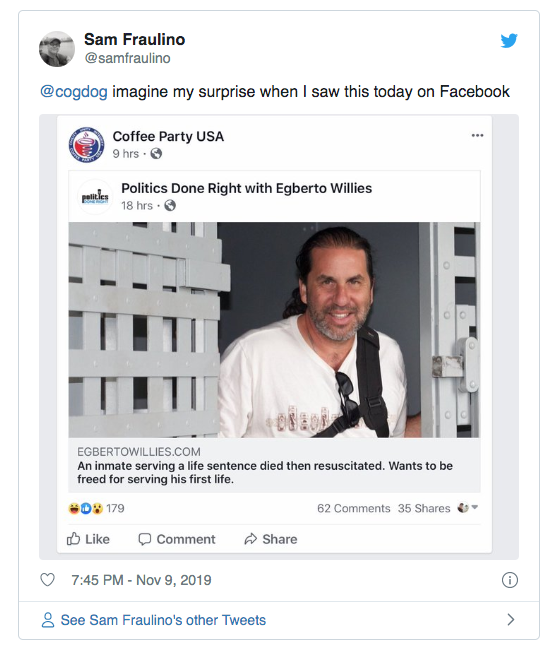
With 24/7 news cycles, media outlets are in greater competition than ever to quickly capture readers’ attention and drive clicks to their websites. This often leads to clickbait: eye-catching headlines, visuals and captions that draw readers in, but don’t match the content within the story. Visuals or captions can often give a certain impression that’s not backed up by the text. This is especially deceptive when people get their news from headlines as they’re scrolling through social media. They get a quick impression without reading through the full story and learning the truth, thus perpetuating misinformation. Take this example that was recently shared on Twitter. The use of this photo along with a headline about an inmate who recently had a near-death experience signals to the reader that the man in the photo is said inmate. Except that he’s not. As the subject of the photo explains in a blog post, the image of him visiting the territorial prison in Laramie, Wyoming, was taken from his open-licensed flickr account. So although the (pretty suspicious-looking) source’s use of the photo was technically legal and the subject was never identified as the inmate, the juxtaposition of the image to the headline create a false connection that is very misleading to the reading.
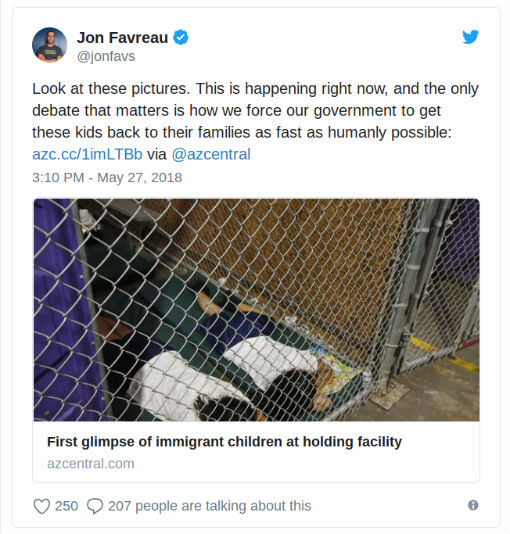
6. False context: Genuine content shared with false contextual information
This is when genuine information or photos are used in a context that doesn’t match. One example is of this now-deleted tweet, which has been screen-shotted and shared throughout the internet. This caption leads viewers to think the image was taken during the Trump administration. However, this image was taken while Obama was president. This is an example of false context because it uses an Obama-era image to criticize the Trump administration. The image itself was real, but it was being used in the wrong context. An article by the Associated Press explains this in further detail.
7. Manipulated content: Genuine information or imagery that’s manipulated to deceive
Sometimes content is manipulated to deceive. On the right, here’s a tweet from Nancy Pelosi that was twisted to fit a political agenda:
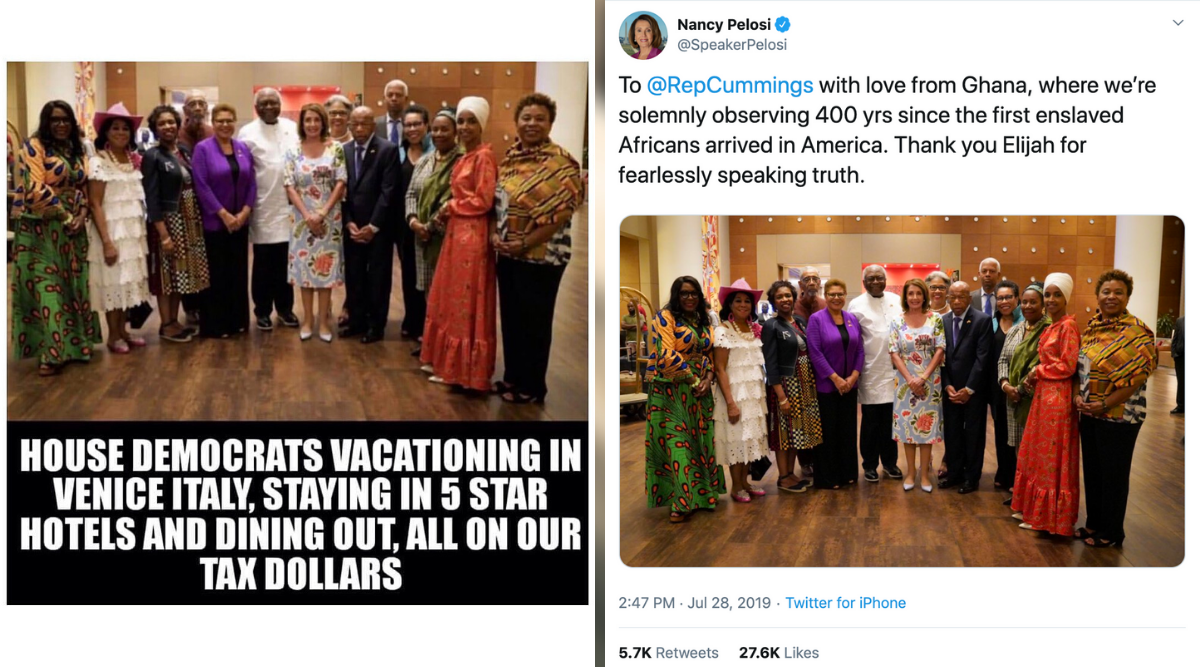
The photo on the left was shared in July 2019 with captions claiming that Democrats were vacationing in Italy, staying in five-star hotels and dining out on Americans’ tax dollars. Snopes debunked this, pointing out that this photo was taken in Ghana rather than Italy, per Pelosi’s original tweet the photo came from.
Additional media literacy resources for students
